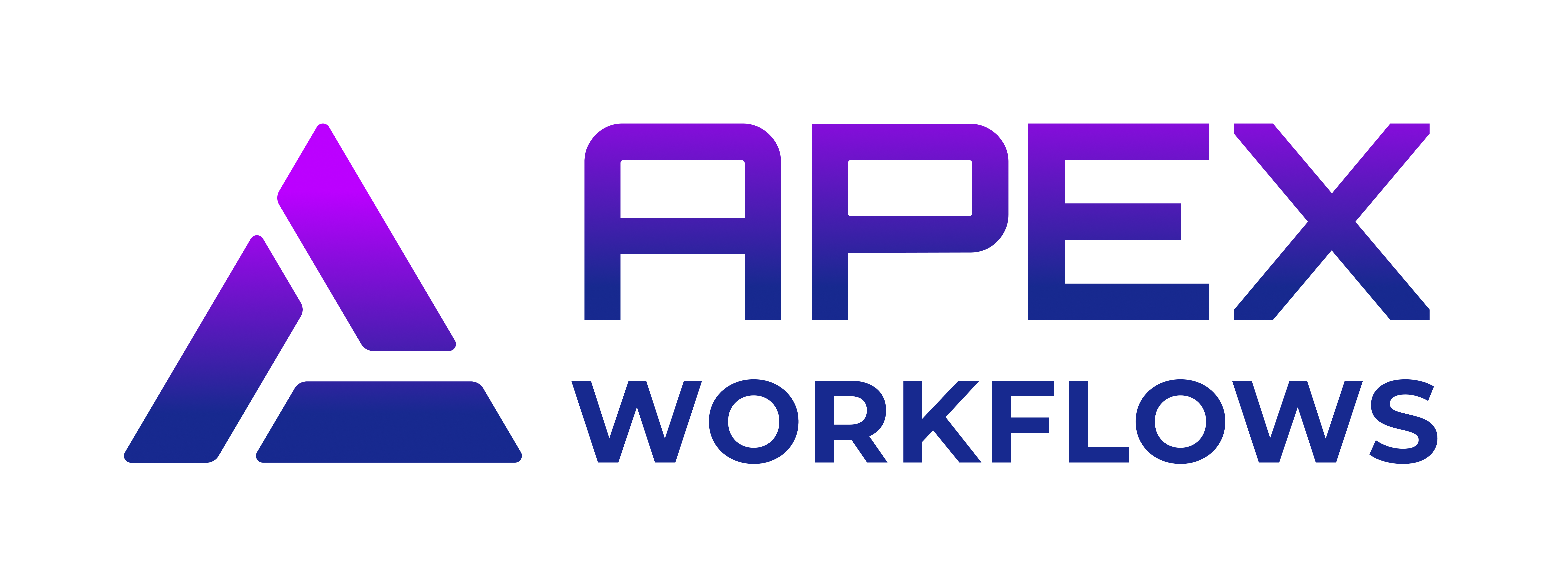In 2025, enterprises operate in a digital landscape defined by speed, data complexity, and constant innovation. With growth in digital services, cloud-native environments, and hybrid workflows, businesses are under increasing pressure to maintain both operational visibility and agility. Intelligent workflow monitoring emerges as a key enabler in this landscape, offering a new level of oversight, responsiveness, and data-driven decision-making. This guide explores how modern organizations can use real-time workflow analytics and AI operations to monitor and optimize workflows across every department—from finance and HR to sales and IT.
What Is Workflow Monitoring in 2025?
Workflow monitoring refers to the continuous observation and analysis of tasks, processes, and data flows within business operations. In 2025, the concept has evolved from manual oversight into intelligent, real-time systems that leverage automation and analytics. It encompasses visibility into every stage of a workflow—tracking execution status, measuring performance, detecting anomalies, and ensuring dependencies between systems are intact.
Unlike traditional monitoring, which focuses on static checklists or delayed reporting, intelligent workflow monitoring incorporates real-time workflow analytics. These systems interpret high-volume data streams, making it possible to understand complex system behaviors as they happen. Key components include data flow visibility, task execution metrics, system and application performance, and AI-driven alerting to ensure proactive issue detection.
Why Real-Time Insights Are Critical for Every Department
Modern departments can no longer function independently of real-time information. Real-time business insights lead to faster decisions, better customer experiences, and stronger compliance. Intelligent workflow monitoring provides each department with the ability to act on live data instead of retrospective analysis.
For finance, real-time monitoring helps detect fraudulent activity by flagging anomalies in transaction patterns and enabling faster reconciliation processes. HR teams benefit by tracking onboarding flows and ensuring timely completion of compliance training or policy updates. In sales and marketing, campaign effectiveness can be measured while in progress—enabling lead scoring, drip campaign optimization, and high-conversion funnel tracking. Meanwhile, IT and DevOps teams use workflow monitoring to detect latency spikes, prevent system downtime, and establish incident response workflows.
Industry leaders like JetBlue and Morgan Stanley exemplify how real-time departmental monitoring leads to smarter decision-making and competitive advantage. JetBlue, for example, uses real-time analytics to adjust operations across flight scheduling and customer service, enhancing punctuality and passenger satisfaction.
The Rise of Intelligent Process Automation & AI Operations
Intelligent Process Automation (IPA) and AI Operations (AI Ops) have fundamentally transformed how workflows are monitored and optimized. In 2025, these practices are centered around machine learning (ML), natural language processing (NLP), and AI agents capable of contextual awareness and autonomous responses.
IPA combines robotic process automation (RPA) with AI to create adaptive workflows that can handle exceptions, learn from patterns, and self-optimize over time. AI Ops, on the other hand, brings AI into IT operations—using data analytics to automate diagnostics, root cause analysis, and remediation tasks.
Enterprise adoption of hyperautomation—an approach that fuses RPA, process mining, AI, and real-time analytics—is creating end-to-end intelligent ecosystems. These systems can automatically assign tickets, reroute workflows in case of delays, and improve processes based on contextual behavior analysis.
Building the Foundation: Key Elements of Intelligent Workflow Monitoring
Effective workflow monitoring begins with robust data observability. Today’s platforms gather logs, metrics, and traces across systems to offer a complete picture of what’s happening across the workflow. AI observability adds another layer—monitoring AI models, ensuring transparency, and reducing the risks of black-box decision-making.
Real-time workflow tracking includes latency measurement, throughput monitoring, exception alerting, and task success/failure trends. On the infrastructure level, monitoring tools track CPU/GPU utilization, cloud resource performance, and the health of integrated microservices and APIs. This full-stack observability enables both technical teams and business units to take proactive action based on real-time conditions.
Cross-Departmental Workflow Performance Optimization
Achieving optimal workflow performance isn’t just an IT goal—it extends into every department’s bottom line. Role-based dashboards are becoming a standard feature of modern monitoring platforms, allowing finance managers, HR leaders, or marketing directors to visualize department-specific key performance indicators (KPIs) derived from real-time workflow data.
By continuously reviewing workflow metrics, departments can fine-tune processes around speed, accuracy, and compliance. In retail, performance tuning might involve optimizing inventory workflows during seasonal peaks. In healthcare, workflow optimization helps streamline admission and discharge processes, ultimately improving patient experiences. Real-world examples show that organizations implementing departmental workflow tracking experience faster process cycles, reduced errors, and increased output quality.
Implementing a Real-Time Monitoring Strategy
A successful intelligent workflow monitoring strategy starts with evaluating current operations. Step one is identifying existing workflows and understanding infrastructural capabilities and limitations. Next, organizations should explore monitoring tools that support AI-driven analytics, process intelligence, and integration compatibility with their tech stack.
Defining clear team roles and escalation procedures is essential for rapid response. Whether it’s an IT incident or a compliance exception, teams need protocols to detect, classify, and resolve issues efficiently. Crucially, training is key—staff need familiarity with monitoring platforms, AI predictions, and automation to ensure adoption.
Success depends not just on implementation but on internal alignment. Breaking down silos between departments and encouraging data transparency will ensure monitoring delivers long-term value.
Success Metrics: Measuring the ROI of Intelligent Workflow Monitoring
Organizations often ask: what's the ROI of investing in intelligent monitoring systems? Measurable benefits manifest across several dimensions. Process efficiency improves through reduced task completion times and faster resolution of exceptions. Financial benefits come from better resource allocation, cost avoidance through minimized outages, and improved compliance that avoids regulatory penalties.
Operational resilience is another value metric. By predicting system behavior and workload anomalies, businesses maintain uptime and avoid disruptions. Predictive analytics also enhances planning, helping teams make data-informed decisions instead of acting reactively. Regular analysis of these KPIs ensures monitoring efforts remain aligned with overall business goals.
Looking Ahead: The Future of Workflow Monitoring Through 2030
As we look toward 2030, workflow monitoring will transform into intelligent orchestration. AI agents will evolve from analytics assistants to collaborative co-workers, capable of performing complex departmental tasks like budget forecasting, workforce scheduling, and multi-channel campaign optimization.
Organizations will need to navigate questions of AI governance, ethics, and regulatory compliance. Clarity on data stewardship, AI explainability, and decision accountability will become vital. Additionally, successful adoption will depend on managing cultural shifts—ensuring that automation augments rather than replaces human contribution, and that all teams are prepared for the future of human–AI collaboration.
Conclusion
Intelligent workflow monitoring is more than a technology trend—it’s a strategic imperative for enterprises navigating the complexities of 2025 and beyond. By harnessing real-time workflow analytics, AI operations, and cross-departmental insights, companies can future-proof their processes, streamline decision-making, and respond with agility in dynamic markets.
Now is the time to invest in a monitoring strategy that not only observes, but intelligently acts. Embrace the promise of intelligent automation while maintaining a balance with human oversight, and your organization will be well-positioned to thrive in the ever-evolving digital era.

![2025s-guide-to-intelligent-workflow-monitoring-real-time-insights-for-every-department-workflow-monitoring-real-time-analytics-ai-ops 2025’s Guide to Intelligent Workflow Monitoring: Real-Time Insights for Every Department – [workflow monitoring, real-time analytics, AI ops]](https://apexworkflows.com/wp-content/uploads/2025/10/make762526707-1024x638.webp)




